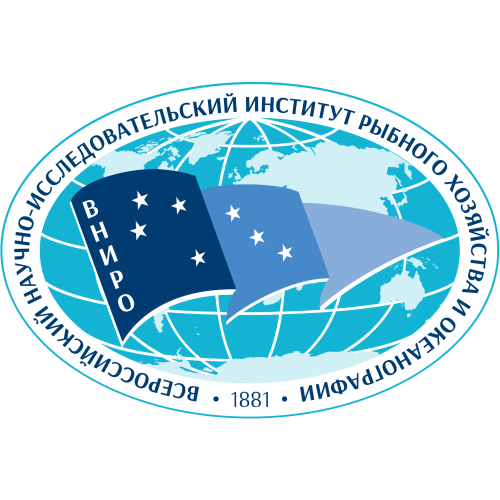Deep-Sea Research Part II: Topical Studies in Oceanography, volume 208, pages 105266
Diet of deep-sea holothurians in theVolcanologists Massif, Bering sea, as inferred from stable isotope and fatty acid analyses
Publication type: Journal Article
Publication date: 2023-04-01
Quartile SCImago
Q1
Quartile WOS
Q2
Impact factor: 3
ISSN: 09670645
Oceanography
Abstract
Holothurians are one of the key components of the deep-sea megabenthos, often forming significant aggregations with high abundance and biomass. The crucial factors determining the pattern of their spatial distribution might be their food strategies, as well as the quantity and quality of available food. Using the set of trophic markers (analysis of fatty acid (FA) composition and stable nitrogen and carbon isotope signatures), we studied the trophic preferences of four common species of deep-sea holothurians (Paelopatides sp., Pannychia henrici, Psolidium sp., and Scotoplanes kurilensis) inhabiting the Volcanologists Massif, Bering Sea, at depths from 984 m to 3395 m. The δ13С values in tissues of all four species varied slightly (from −16.2 to −16.6‰) and were significantly higher than those in sediment organic matter (SOM) (on average, −21.5‰), which indicates the use of organic matter of the same origin by all species. The δ15N values (10.1–12.9‰) were also significantly higher than in SOM (on average, 4.4‰). The lowest average δ15N value was recorded for the deepest-dwelling species (Scotoplanes kurilensis), and the highest value from the shallowest-dwelling ones (Psolidium sp.). All the species differed significantly in FA composition. Psolidium sp. was distinguished by the highest saturated FA content (45.5%) and the lowest polyunsaturated FA (PUFA) content (18.7%). In the rest of the species, PUFAs dominated (>35%). The ratios of major PUFAs varied among the four species studied but all holothurians species were rich in phytoplankton derived FA suggesting tight trophic coupling to phytodetritus. However, for Psolidium sp., bacteria could constitute a substantial portion in the diet. The high level of 20:4n-6 might indicate a significant contribution of protozoans to the diet of Pannychia henrici. Paelopatides sp. and Scotoplanes kurilensis were characterized by a high level of 20:5n-3 and a high value of the 20:5n-3/20:4n-6 ratio, which indicates the predominance of fresh phytodetritus in their diet. The high level of primary production in the upper layers of the Bering Sea provides the high quality of the sedimentary OM and food supply of deposit feeders even at the greatest depths.
Citations by journals
|
1
|
|
|
Deep-Sea Research Part II: Topical Studies in Oceanography

|

Deep-Sea Research Part II: Topical Studies in Oceanography
1 publication, 25%
|
|
Aquaculture International

|

Aquaculture International
1 publication, 25%
|
|
Trudy VNIRO

|

Trudy VNIRO
1 publication, 25%
|
|
Doklady Biological Sciences

|

Doklady Biological Sciences
1 publication, 25%
|
|
1
|
Citations by publishers
|
1
|
|
|
Elsevier

|

Elsevier
1 publication, 25%
|
|
Springer Nature

|

Springer Nature
1 publication, 25%
|
|
Russian Federal Research Institute of Fisheries and Oceanography

|

Russian Federal Research Institute of Fisheries and Oceanography
1 publication, 25%
|
|
Pleiades Publishing

|

Pleiades Publishing
1 publication, 25%
|
|
1
|
- We do not take into account publications that without a DOI.
- Statistics recalculated only for publications connected to researchers, organizations and labs registered on the platform.
- Statistics recalculated weekly.
{"yearsCitations":{"type":"bar","data":{"show":true,"labels":[2023,2024],"ids":[0,0],"codes":[0,0],"imageUrls":["",""],"datasets":[{"label":"Citations number","data":[3,1],"backgroundColor":["#3B82F6","#3B82F6"],"percentage":["75","25"],"barThickness":null}]},"options":{"indexAxis":"x","maintainAspectRatio":true,"scales":{"y":{"ticks":{"precision":0,"autoSkip":false,"font":{"family":"Montserrat"},"color":"#000000"}},"x":{"ticks":{"stepSize":1,"precision":0,"font":{"family":"Montserrat"},"color":"#000000"}}},"plugins":{"legend":{"position":"top","labels":{"font":{"family":"Montserrat"},"color":"#000000"}},"title":{"display":true,"text":"Citations per year","font":{"size":24,"family":"Montserrat","weight":600},"color":"#000000"}}}},"journals":{"type":"bar","data":{"show":true,"labels":["Deep-Sea Research Part II: Topical Studies in Oceanography","Aquaculture International","Trudy VNIRO","Doklady Biological Sciences"],"ids":[19222,19108,31023,10536],"codes":[0,0,0,0],"imageUrls":["\/storage\/images\/resized\/GDnYOu1UpMMfMMRV6Aqle4H0YLLsraeD9IP9qScG_medium.webp","\/storage\/images\/resized\/voXLqlsvTwv5p3iMQ8Dhs95nqB4AXOG7Taj7G4ra_medium.webp","\/storage\/images\/resized\/cxiR8VQqEzzjQj6hvcbH5RqU9pBsYcDQTJj9bA9G_medium.webp","\/storage\/images\/resized\/oZgeErrVFhuDksyqFURLvYS1wtVSBWczh001igGo_medium.webp"],"datasets":[{"label":"","data":[1,1,1,1],"backgroundColor":["#3B82F6","#3B82F6","#3B82F6","#3B82F6"],"percentage":[25,25,25,25],"barThickness":13}]},"options":{"indexAxis":"y","maintainAspectRatio":false,"scales":{"y":{"ticks":{"precision":0,"autoSkip":false,"font":{"family":"Montserrat"},"color":"#000000"}},"x":{"ticks":{"stepSize":null,"precision":0,"font":{"family":"Montserrat"},"color":"#000000"}}},"plugins":{"legend":{"position":"top","labels":{"font":{"family":"Montserrat"},"color":"#000000"}},"title":{"display":true,"text":"Journals","font":{"size":24,"family":"Montserrat","weight":600},"color":"#000000"}}}},"publishers":{"type":"bar","data":{"show":true,"labels":["Elsevier","Springer Nature","Russian Federal Research Institute of Fisheries and Oceanography","Pleiades Publishing"],"ids":[17,8,7874,101],"codes":[0,0,0,0],"imageUrls":["\/storage\/images\/resized\/GDnYOu1UpMMfMMRV6Aqle4H0YLLsraeD9IP9qScG_medium.webp","\/storage\/images\/resized\/voXLqlsvTwv5p3iMQ8Dhs95nqB4AXOG7Taj7G4ra_medium.webp","\/storage\/images\/resized\/cxiR8VQqEzzjQj6hvcbH5RqU9pBsYcDQTJj9bA9G_medium.webp","\/storage\/images\/resized\/oZgeErrVFhuDksyqFURLvYS1wtVSBWczh001igGo_medium.webp"],"datasets":[{"label":"","data":[1,1,1,1],"backgroundColor":["#3B82F6","#3B82F6","#3B82F6","#3B82F6"],"percentage":[25,25,25,25],"barThickness":13}]},"options":{"indexAxis":"y","maintainAspectRatio":false,"scales":{"y":{"ticks":{"precision":0,"autoSkip":false,"font":{"family":"Montserrat"},"color":"#000000"}},"x":{"ticks":{"stepSize":null,"precision":0,"font":{"family":"Montserrat"},"color":"#000000"}}},"plugins":{"legend":{"position":"top","labels":{"font":{"family":"Montserrat"},"color":"#000000"}},"title":{"display":true,"text":"Publishers","font":{"size":24,"family":"Montserrat","weight":600},"color":"#000000"}}}}}
Metrics
Cite this
GOST |
RIS |
BibTex
Cite this
GOST
Copy
Rodkina S. A. et al. Diet of deep-sea holothurians in theVolcanologists Massif, Bering sea, as inferred from stable isotope and fatty acid analyses // Deep-Sea Research Part II: Topical Studies in Oceanography. 2023. Vol. 208. p. 105266.
GOST all authors (up to 50)
Copy
Rodkina S. A., Kiyashko S. I., MORDUKHOVICH V. V. Diet of deep-sea holothurians in theVolcanologists Massif, Bering sea, as inferred from stable isotope and fatty acid analyses // Deep-Sea Research Part II: Topical Studies in Oceanography. 2023. Vol. 208. p. 105266.
Cite this
RIS
Copy
TY - JOUR
DO - 10.1016/j.dsr2.2023.105266
UR - https://doi.org/10.1016%2Fj.dsr2.2023.105266
TI - Diet of deep-sea holothurians in theVolcanologists Massif, Bering sea, as inferred from stable isotope and fatty acid analyses
T2 - Deep-Sea Research Part II: Topical Studies in Oceanography
AU - Rodkina, S A
AU - Kiyashko, S I
AU - MORDUKHOVICH, VLADIMIR V.
PY - 2023
DA - 2023/04/01 00:00:00
PB - Elsevier
SP - 105266
VL - 208
SN - 0967-0645
ER -
Cite this
BibTex
Copy
@article{2023_Rodkina,
author = {S A Rodkina and S I Kiyashko and VLADIMIR V. MORDUKHOVICH},
title = {Diet of deep-sea holothurians in theVolcanologists Massif, Bering sea, as inferred from stable isotope and fatty acid analyses},
journal = {Deep-Sea Research Part II: Topical Studies in Oceanography},
year = {2023},
volume = {208},
publisher = {Elsevier},
month = {apr},
url = {https://doi.org/10.1016%2Fj.dsr2.2023.105266},
pages = {105266},
doi = {10.1016/j.dsr2.2023.105266}
}
Profiles
